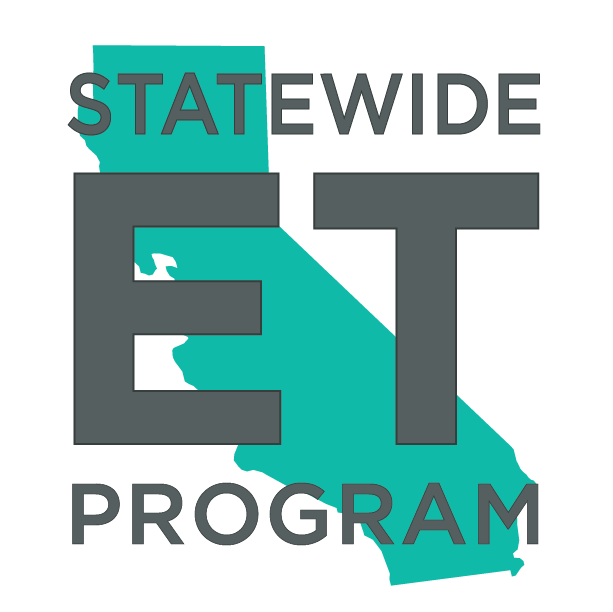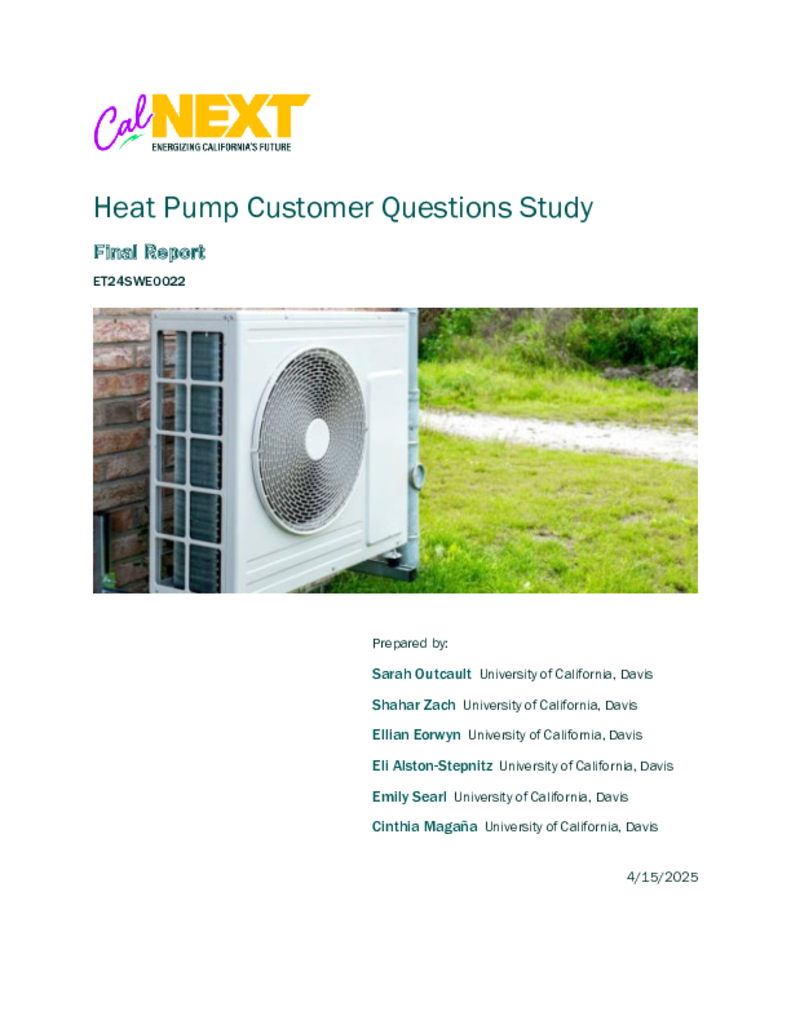ET24SWE0022 - Heat pump Customer Questions Study
Air source heat pumps for replacing gas-powered water and space heating are a keystone technology in efforts to decarbonize buildings.[1] Heat pumps have the potential to save approximately 60% of total residential heating energy consumption and reduce GHG emissions by 13.1 MMTCO2e if installed in homes throughout California.[2] Utility programs in the state offer generous rebates to address the high initial costs of heat pumps, but market adoption must accelerate substantially to achieve the Governor’s goal of installing 6 million heat pumps by 2030. Doing so will require addressing customers’ questions and concerns about heat pumps. Recent research on this topic has relied on third-party reports of customers’ perspectives or data collected from early adopters. By contrast, the proposed project would collect data from the next wave of potential heat pump adopters rather than their proxies. We will mine information from questions and comments posted in public forums (e.g., blogs, news articles, podcasts, online forums), conducting broad sweeps and targeted searches to uncover data on issues such as split incentives between building owners and occupants and views on the need for backup fossil fuel systems. Other priority topics will be identified in consultation with utility program implementers. Using recently available web scraping and AI-assisted data cleaning techniques, we will be able to hear from customers contemplating heat pumps like never before.
This project will identify consumers’ most critical questions and concerns about heat pumps and answer three research questions.
- RQ1: What are the most common questions, comments, and concerns about heat pumps among California’s residential electricity customers?
- RQ2: What insights do their comments and questions give us about the experiences of prospective heat pump adopters?
- RQ3: What insights do they give us about potential adopters’ impressions of heat pump performance, quality of service, and non-energy impacts?
Tangible outcomes of the proposed research will be a description of the relative frequency and nature of the questions and concerns of potential customers. The results will give utility programs a clear sense of what the barriers are, directly from customers’ own words, enabling precise prioritization and targeting of education and outreach efforts that address customers’ most pressing concerns.
Results of the web scraping will be compared to findings from previous studies on heat pump customer perspectives and knowledge gaps. We will identify areas of overlap to help validate our findings, and also examine the new topics that emerged through web scraping to shed light on the type of information that traditional approaches miss.
This research is unique because it will capture knowledge and attitudes about residential heat pumps among prospective adopters who would be part of the “early majority” according to Rogers’ Diffusion of Innovation theory.[3] The early majority represents the crucial wave of prospective customers who must be persuaded to adopt in order to transform the residential heat pump market. Identifying the information they need to address their questions and concerns is critical to designing effective programs and strategies.
[1] Gaur, A. S., Fitiwi, D. Z., & Curtis, J. (2021). Heat pumps and our low-carbon future: A comprehensive review. Energy Research & Social Science, 71, 101764
[2] Applying a 50% emission reduction (Brockway & Delforge, 2018) to the estimated 1.8 MTCO2e per California household (CARB GHG Emissions Inventory, 2021).
[3] Rogers, E.M. (1962) Diffusion of Innovations. New York: Free Press of Glencoe.

